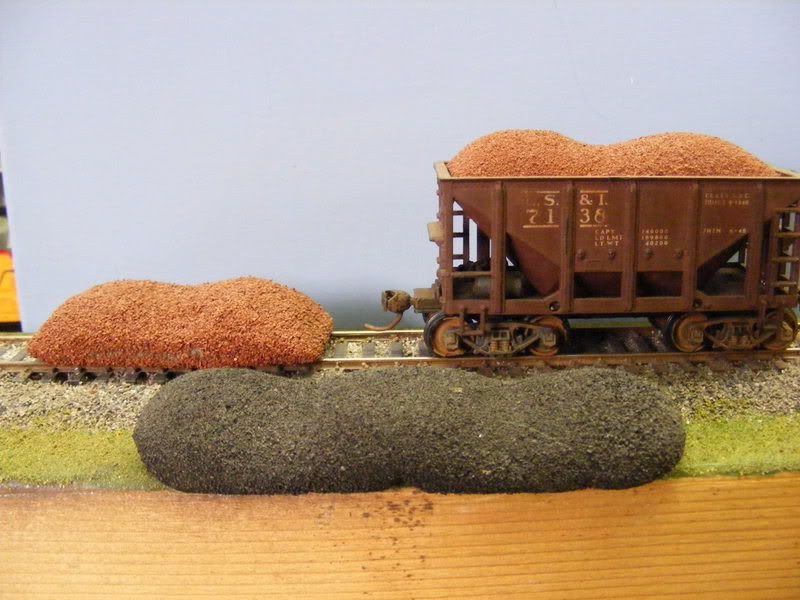Hi Gang,
I think I’ve come up with a real neat way to improve loads for hoppers. The example I’m going to describe below is for upgrading “stone” loads, in this case, for my hoppers coming in from an interchange track, filled with stone from a distant quarry. While I started with an existing commercial load that I bought years ago, you could probably use my approach by cutting a piece of Masonite cut to the size of the inside dimensions of the hopper. I’ve done that myself for making “scrap” loads for my gondolas.
The first photo shows my “empty” hopper. Note that there is some gravel in the bottom. It’s there to hide the lead shot I use to weight the hoppers because as we all know, manufacturers don’t provide enough weight to meet NMRA standards when the cars are running empty, without loads.

The second photo shows how I place the commercial load into the hopper with plastic wrap under it. I simply cut a piece of wrap larger than the opening and set the load down into it, being careful not to make any holes in the plastic. The plastic wrap leaves just enough of a gap along the edge of the completed load so that it will slip in and out of the hopper easily.

Now, I spread diluted Elmer’s glue over the whole installed load and sprinkle on my crushed stone (I used “Woodland Scenic’s” Medium Gray Talus, Item No. C1279) which I think looks like stone that would be coming from a quarry. After I’m happy with the amount of stone and have pushed it carefully along the edges of the hopper, I then drip more diluted white glue all over the “stone”, being careful not to “flood” it too much.
It takes around 30 hours for the glue to dry enough for me to remove the load. I simply pull the plastic wrap up carefully, removing the load. Photo 3 shows the complet
